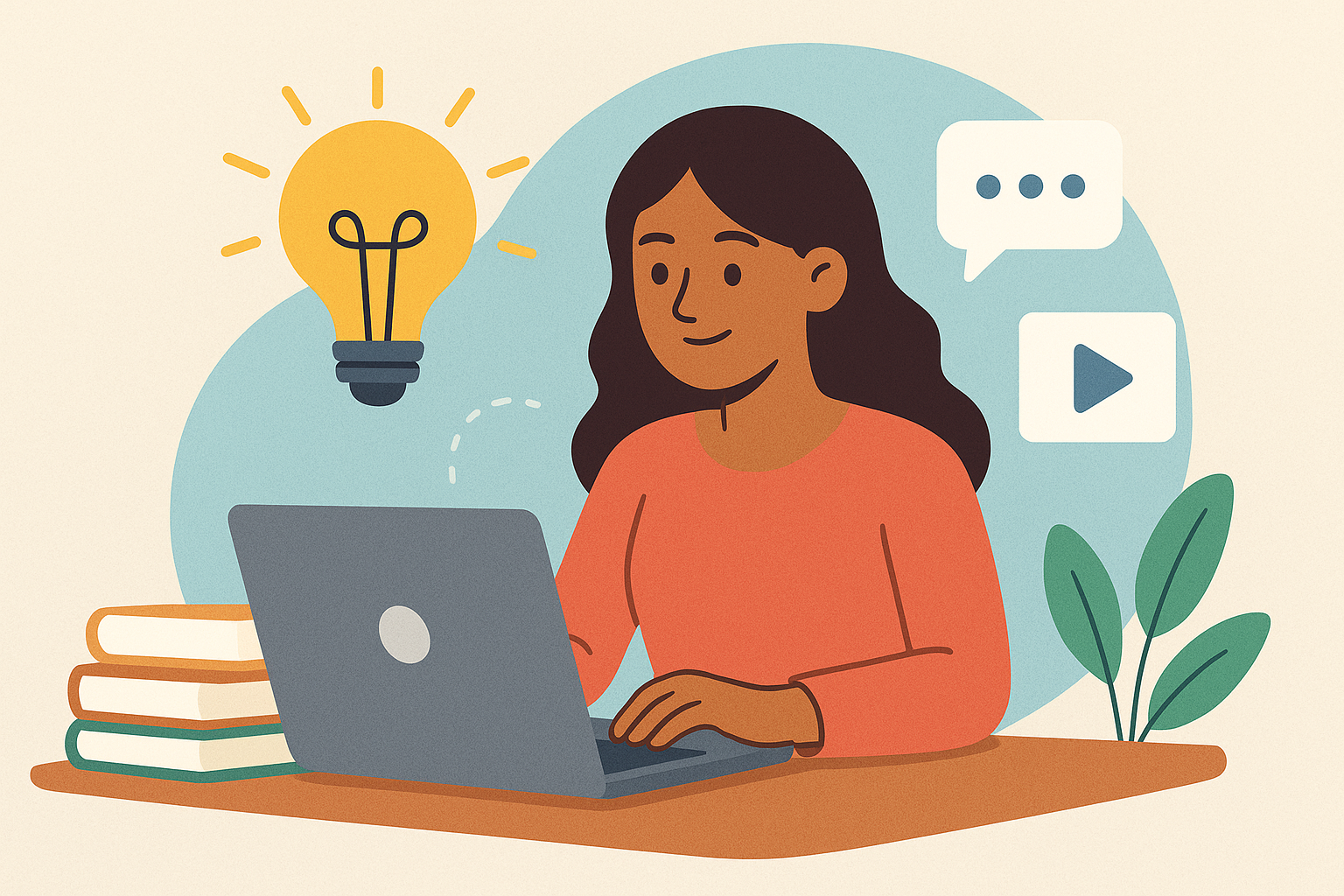
Top 10 Ways Modern Education Is Changing the Future of Learning
Education has always been the foundation of human progress. From ancient classrooms where knowledge was passed down orally to the digital learning platforms of today, education continues to evolve with time. In the 21st century, the rise of technology, globalization, and changing learner needs have brought a major transformation to how we teach and learn.
Modern education is no longer limited to textbooks or physical classrooms. It’s now interactive, personalized, and global. Let’s explore the top 10 ways modern education is changing the future of learning and shaping a smarter, more connected world.
1. Digital Learning and E-Learning Platforms
One of the biggest revolutions in education is the rise of digital learning. Platforms like Coursera, Khan Academy, and Udemy have made quality education accessible to anyone with an internet connection.
Students can now learn from top universities and instructors across the globe without ever stepping into a classroom. Whether it’s coding, design, or business management, e-learning provides flexibility and convenience for all ages.
Moreover, interactive videos, quizzes, and discussion boards make learning more engaging. This shift from traditional lectures to digital platforms promotes self-paced learning and allows students to take control of their education.
2. Artificial Intelligence (AI) in Education
Artificial Intelligence is redefining how teachers teach and how students learn. AI-driven tools analyze student performance and provide personalized feedback.
For instance, platforms like Duolingo use AI algorithms to adjust the difficulty level based on a learner’s progress. Similarly, AI tutors and chatbots can answer students’ questions instantly, helping them understand complex topics without delay.
AI also assists teachers by automating administrative tasks such as grading and attendance, giving them more time to focus on teaching and student interaction. In the future, AI will likely make education more adaptive, inclusive, and efficient.
3. Personalized and Adaptive Learning
Every student learns differently. Traditional education often followed a “one-size-fits-all” model, but modern education embraces personalized learning.
Using data analytics and adaptive software, educators can now tailor lessons to suit each learner’s strengths and weaknesses. For example, a student who excels in math but struggles with reading can get customized exercises to improve reading comprehension while advancing in math.
This approach helps students learn at their own pace and style, boosting both confidence and academic performance. Personalized learning makes education more student-centered rather than teacher-centered.
4. Gamification of Learning
Gamification is a trend that makes learning fun and interactive. By incorporating game elements such as points, badges, and leaderboards into education, students feel more motivated and engaged.
Apps like Kahoot! and Quizizz are excellent examples of gamified learning. They turn lessons into enjoyable quizzes, creating a healthy sense of competition among students.
Gamification not only enhances engagement but also improves knowledge retention. When students are entertained and emotionally invested, they tend to remember what they learn for a longer period.
5. Virtual Reality (VR) and Augmented Reality (AR)
Imagine studying history by virtually walking through ancient Rome or exploring the human body in 3D. Virtual Reality (VR) and Augmented Reality (AR) are making this possible.
These technologies allow students to experience lessons rather than just read about them. VR headsets can take learners on immersive field trips, while AR apps overlay digital information onto real-world objects.
This type of experiential learning helps students understand complex subjects like science, geography, and engineering in a more visual and memorable way. The future of education will likely see VR and AR integrated into classrooms worldwide.
6. Collaborative and Social Learning
Modern education emphasizes collaboration and teamwork, preparing students for real-world environments where communication and cooperation are key.
Digital tools like Google Classroom, Microsoft Teams, and Slack allow students to work together on projects, share resources, and exchange ideas regardless of location.
Social learning also takes place on platforms like Reddit and LinkedIn Learning, where learners discuss topics, share insights, and learn from peers globally. This encourages a sense of community, helping students develop interpersonal skills and global awareness.
7. Focus on Skill-Based and Lifelong Learning
In the past, education often focused on theoretical knowledge. Today, the world demands practical, job-ready skills. Modern education systems now prioritize skill-based learning — from digital literacy and communication to critical thinking and problem-solving.
With industries evolving rapidly, lifelong learning has become essential. Professionals now continue to upskill through online courses, workshops, and micro-certifications.
This trend ensures that learning doesn’t stop after graduation. Instead, education becomes a continuous journey, keeping individuals adaptable and relevant in a fast-changing job market.
8. Global Access and Inclusion
Modern education has broken geographical barriers. Thanks to the internet, learners from remote or underprivileged areas can now access the same materials as students in big cities.
Initiatives like UNESCO’s Global Education Coalition and free online courses are making education more inclusive. Additionally, accessibility tools such as screen readers, subtitles, and multilingual content ensure that students with disabilities or language barriers can participate fully.
Education is becoming a universal right, not a privilege. This inclusivity will empower millions of learners worldwide and create a more equitable society.
9. Integration of Soft Skills and Emotional Intelligence
Academic excellence alone is no longer enough. Modern education recognizes the importance of soft skills — communication, teamwork, empathy, and leadership.
Schools and universities are now incorporating emotional intelligence (EQ) training into their curricula. Students learn how to manage stress, collaborate effectively, and develop empathy for others.
Employers increasingly value these skills, as they are essential for success in the workplace. By focusing on emotional growth as well as intellectual development, modern education is shaping well-rounded, emotionally resilient individuals.
10. Sustainable and Eco-Friendly Learning
Sustainability has become a global priority, and education plays a vital role in promoting it. Modern education encourages eco-friendly practices such as digital textbooks, online submissions, and paperless classrooms.
Schools are also integrating environmental education into their curricula to raise awareness about climate change and sustainable living.
By teaching students the importance of sustainability, modern education fosters a generation that is not only tech-savvy but also environmentally conscious — ready to build a better future for the planet.
The Future Outlook
As we move further into the digital age, education will continue to evolve. Technologies like AI, blockchain, and immersive media will make learning more secure, interactive, and accessible.
However, technology alone cannot replace the human touch. The role of teachers as mentors, guides, and motivators remains crucial. The future of learning will depend on how we balance innovation with empathy — ensuring that education stays both advanced and humane.
Conclusion
Modern education is transforming the way we learn, teach, and interact with knowledge. From AI-driven personalization to virtual classrooms and lifelong learning, these changes are preparing learners for a dynamic and interconnected world.
The future of education is not just about acquiring information but about developing skills, creativity, and emotional intelligence to solve real-world problems.
As technology and innovation continue to shape our educational systems, one thing is certain — the future of learning is bright, inclusive, and limitless.

